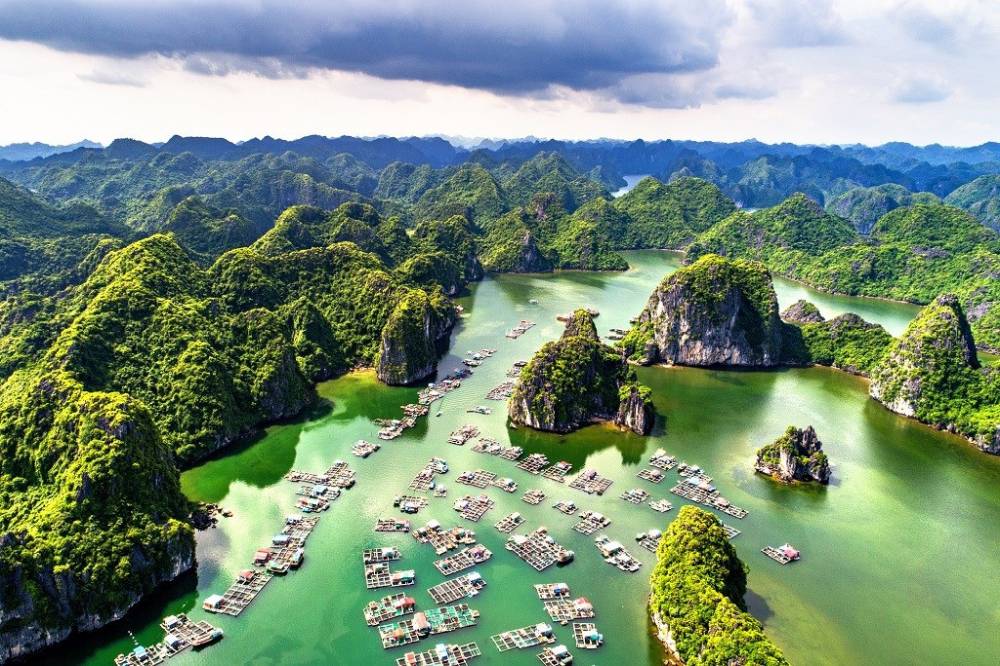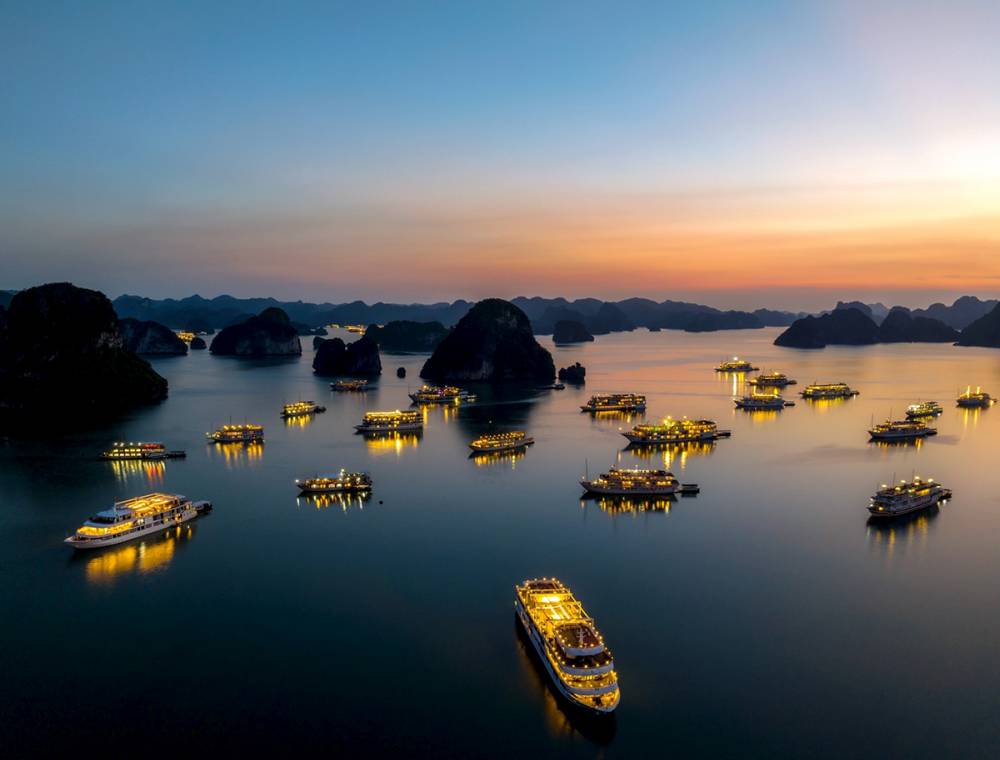On 16th September 2023, in Saudi Arabia, the 45th session of the UNESCO World Heritage Committee approved the nomination dossier and recognized the Ha Long Bay - Cat Ba Archipelago as a World Natural Heritage Site.
Participating in the meeting was Associate Professor - Dr. Le Thi Thu Hien, Director of the Department of Cultural Heritage (Ministry of Culture, Sports and Tourism); Ambassador Le Thi Hong Van, Head of the Vietnamese Permanent Delegation to UNESCO. Also attending were Mr. Le Khac Nam, Vice Chairman of Hai Phong City People's Committee; Ms. Nguyen Thi Hanh, Vice Chairwoman of Quang Ninh Provincial People's Committee.

Lan Ha Bay, Cat Ba Archipelago. Photo: collection
Ha Long Bay - Cat Ba Archipelago is located in the Northeast of Vietnam, 165km from the capital Ha Noi, a symphony of majestic mountains, forests and vast islands. Natural areas have a core area of 65,650 hectares and a buffer area of 34,140 hectares.
Ha Long Bay in Quang Ninh Province was named by UNESCO as a world heritage site twice, in 1994 and 2000. Cat Ba Archipelago belongs to Hai Phong City. The archipelago had earlier been recognised by UNESCO as a world biosphere reserve.
In September 2016, the prime minister allowed the Hai Phong City administration to work with authorities in Quang Ninh Province, to plan the nomination of Ha Long Bay - Cat Ba Archipelago as a world heritage site.
According to UNESCO records, Ha Long Bay - Cat Ba Archipelago is recognized by UNESCO as a World Heritage Site because it contains areas of natural beauty including limestone islands covered with vegetation and sharp peaks. Limestone mountains rise above the sea with associated karst features such as domes and caves.
This area has 1,133 limestone islands of various shapes, of which 775 of the rocky islands belong to Ha Long Bay and 358 limestone islands of the Cat Ba archipelago. They are also covered with rich vegetation over sparkling emerald waters. Ha Long Bay - Cat Ba archipelago appears like a chess board made of precious stones.
Ha Long Bay - Cat Ba Archipelago is considered a geological museum, containing outstanding global value, witnessing typical changes in the Earth's historical development.

Ha Long Bay. Photo: collection
Ha Long Bay - Cat Ba Archipelago is a highly diverse area of Asia, possessing 7 adjacent tropical and subtropical marine - island ecosystems that develop successively. These include: primary tropical rainforest ecosystem; cave ecosystem; Mangrove Ecosystems; intertidal ecosystem; coral reef ecosystem; soft bottom ecosystem; saltwater lake ecosystem.
Ha Long Bay - Cat Ba Archipelago is also home to a habitat of many rare species of animals and plants. Possessing the largest maritime forest in Vietnam with an area of more than 17,000 hectares and diverse ecosystems, this heritage site is home to 4,910 species of flora and fauna on land and in the sea.
Of these, there are 198 species on the IUCN Red List, 51 endemic species. The area of primary forest is about 1,045.2 hectares on Cat Ba island, creating the ecological value and biodiversity of the heritage. In particular, the Cat Ba Langur (Trachypithecus poliocephalus) is a rare species, on the list of animals at highest risk of extinction and recorded in World Red Book. Up to now, there are about 60 - 70 individuals distributed only in Cat Ba, there is no other place in the world where this species appears.
Heritage of Ha Long Bay - Cat Ba Archipelago also has many endemic plant species, only adapted to living on limestone islands, which are found nowhere else in the world. These are: cycas tropophylla, chirita drakei, livistona halongensis, Impatiens verrucifera, schefflera alongensis, paphiopedilum concolor, euphorb, liliac, cycad, apocyn...
Furthermore, scattered throughout the area are 138 saltwater lakes formed from sinkholes, karst funnels and closed valleys. These lakes, accounting for about 1/3 of the total saltwater lakes in the world, are home to ancient and rare species, of great value for conservation and scientific research, and are also a favorable environment for evolutionary species.
A unique ecological garden, an intact nature reserve, with a system of karst limestone mountains, rich caves, a unique ecosystem combined with the noisy sound of waves and the rhythm of residential life, all creating a magnificent landscape, full of vitality of nature and people.
